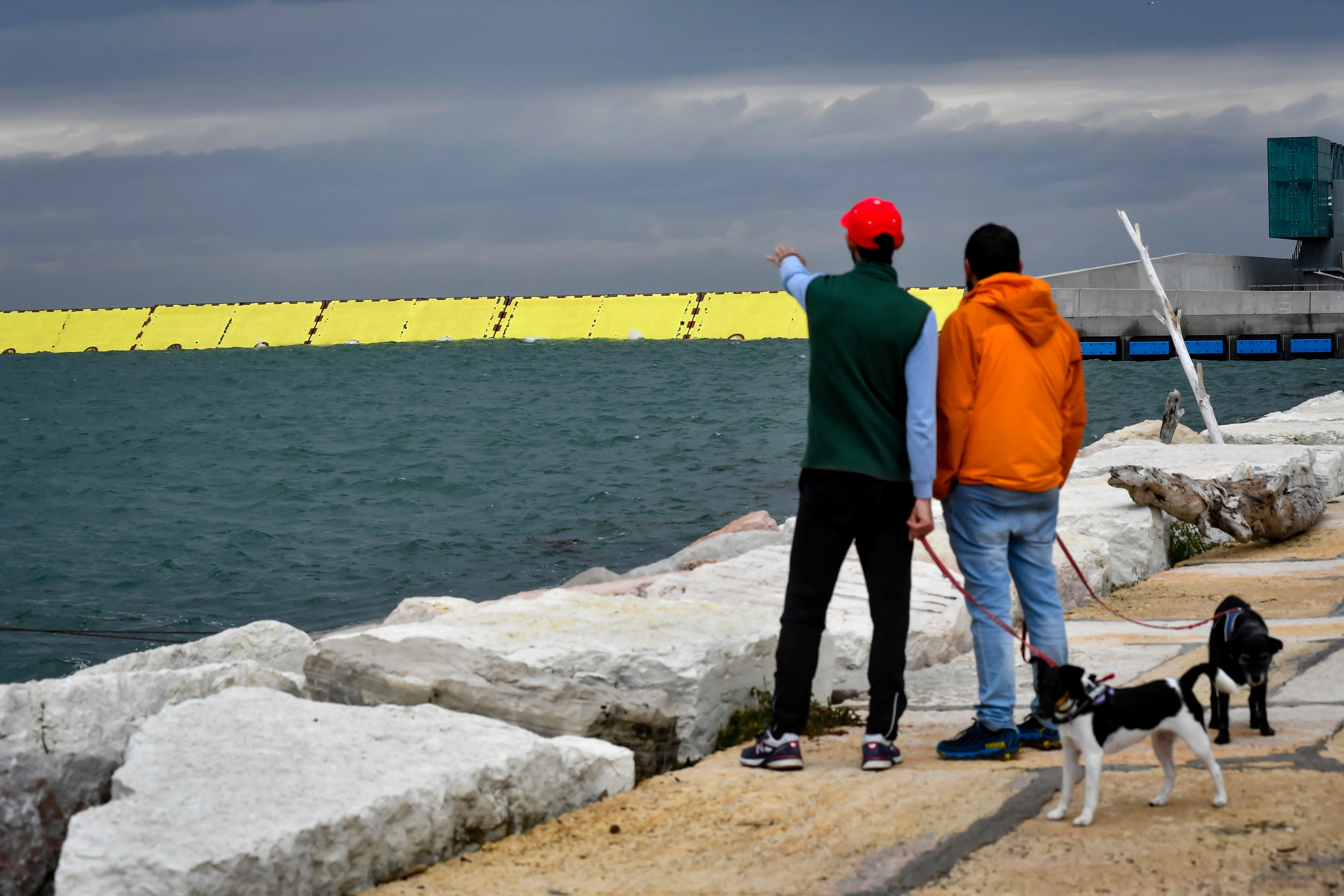Venice remains dry as flood barriers pass 1st emergency
Controversial and long-delayed underwater barriers passed their first emergency test on Saturday, protecting the Italian lagoon city of Venice from a tide that peaked at 125 centimeters (49 inches), a level that would normally inundate more than a third of the city

Your support helps us to tell the story
From reproductive rights to climate change to Big Tech, The Independent is on the ground when the story is developing. Whether it's investigating the financials of Elon Musk's pro-Trump PAC or producing our latest documentary, 'The A Word', which shines a light on the American women fighting for reproductive rights, we know how important it is to parse out the facts from the messaging.
At such a critical moment in US history, we need reporters on the ground. Your donation allows us to keep sending journalists to speak to both sides of the story.
The Independent is trusted by Americans across the entire political spectrum. And unlike many other quality news outlets, we choose not to lock Americans out of our reporting and analysis with paywalls. We believe quality journalism should be available to everyone, paid for by those who can afford it.
Your support makes all the difference.Controversial and long-delayed underwater barriers passed their first emergency with flying colors on Saturday, protecting the Italian lagoon city of Venice from a tide that peaked at 125 centimeters (49 inches), a level that would normally inundate more than a third of the city.
Instead, St. Mark's Square, one of the lowest points in the city, remained dry as tourists criss-crossed the space, ignoring the raised walkways put in place each fall against the notorious high tides.
Mayor Luigi Brugnaro s voice broke in emotion as he surveyed from a boat the raised barriers, saying with understatement: “We are satisfied.” He later toasted the success standing on dry ground in Pellestrina, a lagoon island that is often one of the first to flood.
It took about 100 technicians about an hour and a quarter to get all 78 barriers into place, said Giuseppe Fiengo, the government commissioner put in charge of the colossal project following a corruption scandal.
"It is a great moment. This is thanks to everyone in the technical area who worked very tiring shifts as this is the first time under these conditions,'' Fiengo said by telephone. He said in the future a single team of 18 people should be able to raise the barriers.
Authorities accelerated deployment of the system after the lagoon city was inundated with the worst tides in 53 years last November. An increased frequency of high water brought on by climate change has added urgency to the completion of the project.
While the 78 barriers have all been installed, some infrastructure is still being completed. Eventually, the system will be deployed when tides of 110 centimeters (43 inches) are forecast, but while work is still underway the project’s special commissioners have set a threshold of 130 centimeters, which was the forecast.
In view of the forecast, port authorities had banned shipping traffic through the three access points where the barriers are installed, until 4:30 p.m.
The system of movable underwater barriers, dubbed Moses, has been beset by corruption, cost overruns and delays. Projected at 1.8 billion euros ($2 billion) and meant to be completed by 2011, the project has so far cost 5.5 billion euros and is running more than a decade behind schedule.